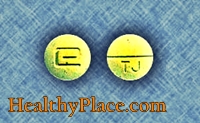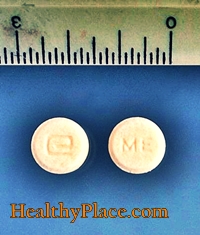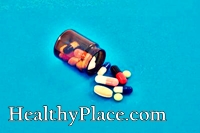Dextroamphetamine saccharate/Dextroamphetamine sulfate (Dexedrine) in treating ADHD:
 Dexedrine is one of the better known stimulant medications and is second only to Ritalin in the treatment of ADHD. The generic equivalent of Dexedrine is Dextroamphetamine Sulfate. Because the PDR continues to list Dexedrine under "Diet Control" medications, some insurance companies will not cover Dexedrine for the treatment of ADHD.
Dexedrine is one of the better known stimulant medications and is second only to Ritalin in the treatment of ADHD. The generic equivalent of Dexedrine is Dextroamphetamine Sulfate. Because the PDR continues to list Dexedrine under "Diet Control" medications, some insurance companies will not cover Dexedrine for the treatment of ADHD.
Important things to bear in mind when prescribing or taking Dexedrine:
- The onset of action is 30 minutes, slower than Ritalin.
- The coverage provided by Dexedrine is 3 1/2 to 4 1/2 hours; about an hour longer than Ritalin, especially with adult administration.
- Dexedrine purportedly has a "smoother" onset of action and "drop-off" than Ritalin. It is usually almost completely absorbed and therefore one does not usually see the variation in onset of action that one sees with the use of Ritalin.
- Dexedrine 5mg is about equivalent to 10mg of Ritalin. In other words it is about twice as potent as Ritalin.
- Ingestion of Vitamin C and Dexedrine simultaneously, e.g., taking medication with orange juice, may significantly reduce Dexedrine absorption.
- Because Dexedrine in the SR form is long acting, it is very useful for Middle and High school students who forget to take their second or third dose.
- Dexedrine, however, has the potential side effect of reduced appetite.
Summary Drug Monograph for Dexedrine:
Clinical Pharmacology:
Amphetamines are non-catecholamine, sympathomimetic amines with CNS stimulant activity. Peripheral actions include elevations of systolic and diastolic blood pressures and weak bronchodilator and respiratory stimulant action.
There is neither specific evidence which clearly establishes the mechanism whereby Amphetamines produce mental and behavioral effects in children, nor conclusive evidence regarding how these effects relate to the condition of the central nervous system
Dexedrine (dextroamphetamine sulfate) Spansule capsules are formulated to release the active drug substance in vivo in a more gradual fashion than the standard formulation, as demonstrated by blood levels. The formulation has not been shown superior in effectiveness over the same dosage of the standard, noncontrolled-release formulations given in divided doses.
Dosage and Aministration:
Attention Deficit Disorder with Hyperactivity:
Not recommended for pediatric patients under 3 years of age.
In pediatric patients from 3 to 5 years of age, start with 2.5 mg daily, by tablet daily dosage may be raised in increments of 2.5 mg at weekly intervals until optimal response is obtained.
In pediatric patients 6 years of age and older, start with 5 mg once or twice daily, daily dosage may be raised in increments of 5 mg at weekly intervals until optimal response is obtained. Only in rare cases will it be necessary to exceed a total of 40 mg per day.
Spansule capsules may be used for once-a-day dosage wherever appropriate. With tablets, give first dose on awakening additional doses (1 or 2) at intervals of 4 to 6 hours.
Where possible drug administration should be interrupted occasionally to determine if there is a recurrence of behavioral symptoms sufficient to require continued therapy.
Warnings:
Amphetamines have a high potential for abuse. Admimistration of Amphetamines for prolonged periods of time may lead to drug dependence and should be avoided. Particular attention should be paid to patients obtaining Amphetamines for nontherapeutic use or distribution to others.
Contraindications:
Advanced arteriosclerosis, symptomatic cardiovascular disease, moderate to severe hypertension, hyperthyroidism, known hypersensitivity or idiosyncrasy to the sympathomimetic amines, glaucoma.
Agitated states.
Patients with a history of drug abuse.
During or within 14 days following the administration of monoamine oxidase inhibitors (hypertensive crises may result).
Drug Interactions:
Acidifying Agents: Gastrointestinal acidifying agents (guanethidine, reserpine, glutamic acid HCl, ascorbic acid, fruit juices, etc.) lower absorption of amphetamines, Urinary acidifying agents (ammonium chloride, sodium acid phosphate, etc.) increase the concentration of the ionized species of the amphetamine molecule, thereby increasing urinary excretion. Both groups of agents lower blood levels and efficacy of amphetamines.
Adrenergic Blockers: Adrenergic blockers are inhibited by amphetamines.
Alkalinizing Agents: Gastrointestinal alkalinizing agents (sodium bicarbonate, etc.) increase absorption of amphetamines. Urinary alkalinizing agents (acetazolamide, some thiazides) increase the concentration of the non-ionized species of the amphetamine molecule, thereby decreasing urinary excretion. Both groups by agents increase blood levels and therefore potentiate the action of amphetamines.
Antidepressants tricyclic: Amphetamines may enhance the activity of tricyclic or sympathometic agents; d-amphetamine with desipramine or protriptyline and possibly other tricyclics cause striking and sustained increases in the concentration of d-amphetamine in the brain; cardiovascular effects can be potentiated.
MAO Inhibitors: MAOI antidepressants, as well as a metabolite of furazolidone, slow amphetamine metabolism. This slowing potentiates amphetamines, increasing their effect on the release of norepinephrine and other monoamines from adrenergic nerve endings; this can cause headaches and other signs of hypertensive crisis. A variety of neurological toxic effects and malignant hyperpyrexia can occur, sometimes with fatal results.
Antihistamines: Amphetamines may counteract the sedative effect of antihistamines.
Antihypertensives: Amphetamines may antagonize the hypotensive effects of antihypertensives.
Chlorpromazine: Chlorpromazine blocks dopamine and norepinephrine reuptake, thus inhibiting the central stimulant effects of amphetamines, and can be used to treat amphetamine poisoning.
Ethosuximide: Amphetamines may delay intestinal absorption of ethosuximide.
Haloperidol: Haloperidol blocks dopamine and norepinephrins reuptake, thus inhibiting the central stimulant effects of amphetamines.
Lithium Carbonate: The stimulatory effects of amphetamines may be inhibited by Lithium Carbonate.
Meperidine: Amphetamines potentiate the analgesic effect of meperidine.
Methenamine Therapy: Urinary excretion of amphetamines is increased, and efficacy is reduced, by acidifying agents used in methenamine therapy.
Norepinephrine: Amphetamines enhance the adrenergic effect of norepinephrine.
Phenobarbital: Amphetamines may delay administration of phenobarbital and may produce an intestinal absorption of phenobarbital; coadministration of phenobarbital may produce a co-synergistic anticonvulsant action.
Phenytoin: Amphetamines may delay intestinal absorption of phenytoin; co-administration of phenytoin may produce a synergistic anticonvulsant action.
Propoxyphene: In cases of propoxyphene overdosage, amphetamine CNS stimulation is potentiated and fatal convulsions can occur.
Veratrum Alkaloids: Amphetamines inhibit the hypotensive effect of veratrum alkaloids.
Precautions:
Long-term effects of amphetamines in pediatric patients have not been well established.
Amphetamines are not recommended for use in pediatric patients under 3 years of age with Attention Deficit Disorder with Hyperactivity. Clinical experience suggests that in psychotic children, administration of amphetamines may exacerbate symptoms of behavior disturbance and thought disorder.
Amphetamines have been reported to exacerbate motor and phonic tics and Tourette's syndrome. Therefore, clinical evaluation for tics and Tourette's syndrome in children and their families should precede use of stimulant medications.
Data are inadequate to determine whether chronic administration of amphetamines may be associated with growth inhibition; therefore growth should be monitored during treatment.
Drug treatment is not indicated in all cases of Attention Deficit Disorder with Hyperactivity and should be considered only in light of the complete history and evaluation of the child. The decision to prescribe amphetamines should depend on the physician's assessment of the chronicity and severity of the child's symptoms and their appropriateness for his/her age. Prescription should not depend solely on the presence of one or more of the behavioral characteristics.
When these symptoms are associated with acute stress reactions treatment with amphetamines is usually not indicated.
Adverse Reactions:
Cardiovascular: Palpitations, tachycardia, elevation of blood pressure. There have been isolated reports of cardiomyopathy associated with chronic amphetamine use.
Central Nervous System: Psychotic episodes at recommended doses (rare), overstimulation, restlessness, dizziness, insomnia, euphoria, dyskinesia, dysphoria, tremor, headache, exacerbation of motor and phonic tics and Tourette's syndrome.
Gastrointestinal: Dryness of the mouth, unpleasant taste, diarrhea, constipation, other gastrointestinal disturbances. Anorexia and weight loss may occur as undesirable effects.
Allergic: Urticaria.
Endocrine: Impotence, changes in libido.
next: Medication Treatments for ADHD - Methamphetamine HCL (Desoxyn) for ADHD
~ adhd library articles
~ all add/adhd articles
 Busiprone
Busiprone Cylert ranks third in sales for the treatment of ADHD. Cylert is manufactured by Abbott; no generic is available.
Cylert ranks third in sales for the treatment of ADHD. Cylert is manufactured by Abbott; no generic is available. Desoxyn
Desoxyn Dexedrine is one of the better known stimulant medications and is second only to
Dexedrine is one of the better known stimulant medications and is second only to  Adderall is made by Richwood Pharmaceuticals, and was previously known as 'Obetral'. The dosage of Adderall is roughly equivalent to a comparable dose of Dexedrine.
Adderall is made by Richwood Pharmaceuticals, and was previously known as 'Obetral'. The dosage of Adderall is roughly equivalent to a comparable dose of Dexedrine. Ritalin is said to affect as much as a 70% improvement in those affected with ADHD. Ritalin is supposed to induce hyperperfusion [increase blood supply] to the frontal lobes of the brain. Of all the ADHD medications, Ritalin is the most inconsistently absorbed. Some adults and children absorb as much as 80-90% of the medication, whereas others only absorb 30-40% of a medication dose.
Ritalin is said to affect as much as a 70% improvement in those affected with ADHD. Ritalin is supposed to induce hyperperfusion [increase blood supply] to the frontal lobes of the brain. Of all the ADHD medications, Ritalin is the most inconsistently absorbed. Some adults and children absorb as much as 80-90% of the medication, whereas others only absorb 30-40% of a medication dose. Bipolar disorder seems to slip under the radar of public awareness. Respondents to a telephone survey about mood disorders rarely thought of it: Almost four out of five Americans did not name it as a disorder.
Bipolar disorder seems to slip under the radar of public awareness. Respondents to a telephone survey about mood disorders rarely thought of it: Almost four out of five Americans did not name it as a disorder.